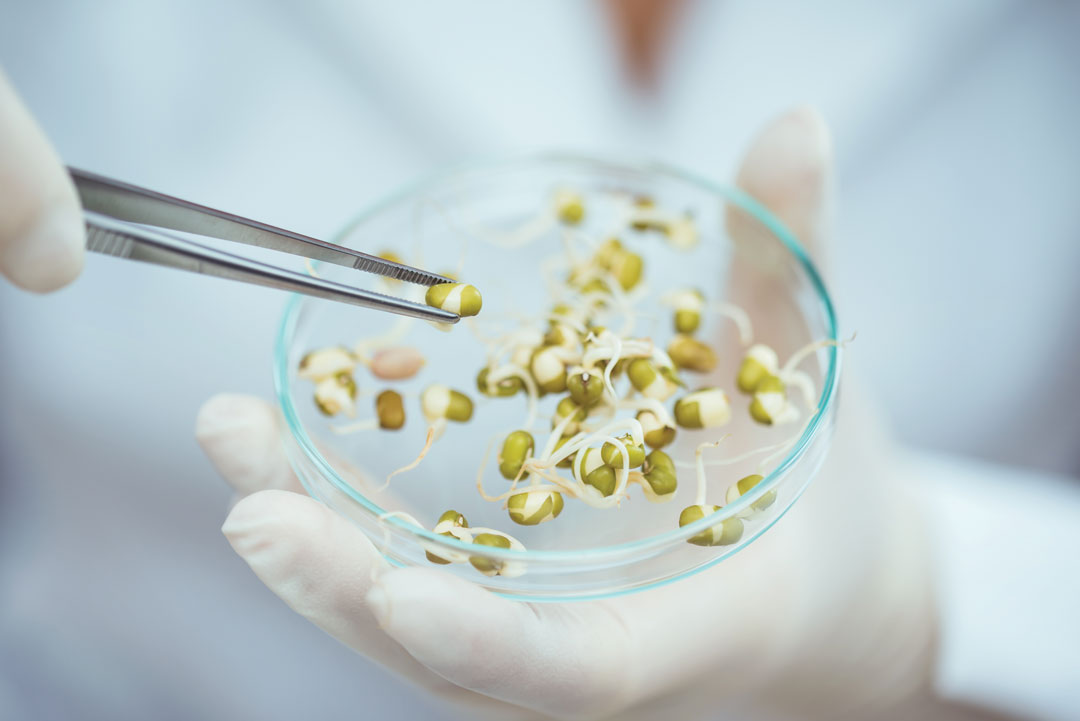GROWTH INDUSTRY
IMPROVED SEED TESTING TECHNOLOGY PUSHES PERFORMANCE AND PROFIT
BY JENNIFER BARBER
As agriculture has become more digital and data-driven, the expectations farmers have for seed performance have also increased. While certain seed testing processes such as germination testing haven’t changed in decades, new technologies such as digital imaging and molecular testing are speeding the process and providing better information about seed lots. These tests are typically requested by seed companies, but the end user benefits by knowing the seed has been more rigorously tested than ever.
Plant breeding programs require good-quality seed that is tested for several performance requirements. These include physical purity, variety, germination and vigour.
While germination tests are important, they don’t tell the whole story. Quality, performance and vigour are becoming more crucial as seed becomes a more valuable commodity.
The federal Seeds Act requires that all commercially sold seed be tested. In the past, the heavily subsidized tests were conducted by government scientists. However, farmers didn’t see the value in testing bin-run seed. “Because it was so inexpensive, people came to not value the testing,” said Sarah Foster, president of 20/20 Seed Labs. “For years, people would think they could grow a few kernels in the window and see if the seed grew. But they were missing out on sensitive issues and the crop would be slow to grow and not get the kind of early performance needed to set the season up for success.” Over the last three years especially, she said, customer demand for better quality and performance data has increased, and this is driven by the implementation of digital farming practices.
Starting in 2014, seed testing shifted to the private sector, with the Canadian Food Inspection Agency (CFIA) maintaining oversight. “Our staff are accredited as well, not just the company itself,” said Holly Gelech, manager, business development, with SGS BioVision. “They [take] two years of in-house training, then a series of CFIA exams. Seed analysts are certified in the standard tests conducted on commercial seed. Every year, our staff are evaluated through blind proficiency tests to ensure they are following the established protocols and analysis.”
The only diseases mandated for testing by the Seeds Act are true loose smut in barley and the presence of ergot or sclerotial bodies. Other common seed-borne diseases aren’t regulated by the act but are often tested for. If requested, seed dealers can provide buyers with the seed’s complete analysis. “There are specific germination rates required depending on the seed—90 per cent for canola and 85 per cent for cereals,” said Foster. “Today, there are very elaborate additional tests done.” The primary concern used to be the effect of temperature on germination, but now farmers also want to know how long germination takes, especially with higher-value crops such as canola and hemp. “We’re talking timing under stressful conditions,” said Foster. “When people are paying big money for this seed, they want to see most of it, if not all of it, come up within a certain time period.”
Emerging diseases are another important data point, as seed-borne pathogens can also manifest in the field, which was particularly evident when Fusarium head blight hit western Canadian cereals in 2016. If a seed test detects the disease, the farmer can choose not to market that seed or to have it treated. “Our environment is constantly changing, and with that comes new diseases with different vectors,” said Foster. “There are at least 10 we look for no matter where you grow, but there are diseases specific to different crops and regions.”
Set out by the International Seed Testing Association, testing is globally standardized. In Canada, the CFIA enforces additional regulations. “We provide feedback on how to improve the tests, and we work with the CFIA to ensure our findings are consistent,” said Gelech. One such recent improvement pertinent to cereals is that fractions of ergot bodies now count toward total tolerance limits.
In Western Canada, vigour tests are increasingly important in assessing seed performance in poor conditions. As cool springs can heavily impact growth, vigour tests include a cool stress test to determine seed performance under conditions that simulate cold, wet, early-spring planting.
Foster said that in the last five years there has been an increase in the variety of seed tests and combinations of tests her lab is asked to conduct. As precision farming requires greater uniformity, automated, robotic equipment is used to carry out repetitive tasks such as pipetting chemicals into vials for molecular testing. “Seed testing has always been scientific, but the process and the results are becoming more respected as we become more precise,” said Foster. The lab is moving from routine type testing to more advanced technologies that include advanced vigour.
Advanced vigour is used to determine the full potential of the seed by establishing a number that will equate to precision seeding under various field conditions. An innovation that’s aimed at the farm bottom line, multi-test suites are better able to determine a seed lot’s ability to withstand environmental stresses and so paint a better picture of actual field performance. Molecular testing for disease, traits, GMO (genetically modified organism) verification and varietal identification is likewise steadily advancing. Molecular testing in particular is now coming to replace the traditional testing method of placing seeds on agar plates and monitoring them for disease growth; molecular testing offers quicker turnaround, greater accuracy and the ability to target particular diseases.
“We also do more digital imaging where we use X-ray technology,” said Foster. While molecular testing analyzes genes and proteins to determine, among other things, which variety of seed and what diseases are present in samples, X-ray examination can determine the integrity and condition of the seed’s internal structure. This has been very effective with corn, soybean and peas, but is now starting to be used with cereals. Deficiencies such as sprouting activity, fissures and cracks or missing seed coat portions are immediately evident.
Digital technology is also used by labs to speed turnaround. While mandated tests such as germination cannot be sped up, digital technology can provide farmers with faster access to additional data points so they can make timely management decisions.
Alberta Seed Processors has initiated the Seed Smart program, which partners its member facilities with commercial seed testing labs to encourage customers to test for more than germination. “We have put together a package of tests to encourage seed growers to see the types of information they can get from their seed,” said Foster. “Especially for the high-value, high-tech seed, there is a wide variety of data that can be found in these tests and help in marketing their products.”
Seed technology will be increasingly important in improving yields to feed a growing world population, she continued. “In new seed varieties, we’re going to see more drought and salinity tolerance. We will push the boundaries of what can be grown. This high-tech seed is going to be more expensive, so we are going to be increasingly careful about what we put in the ground. As seed scientists, we will be able to provide more value by helping to make sure the seed will perform as promised.”







Comments